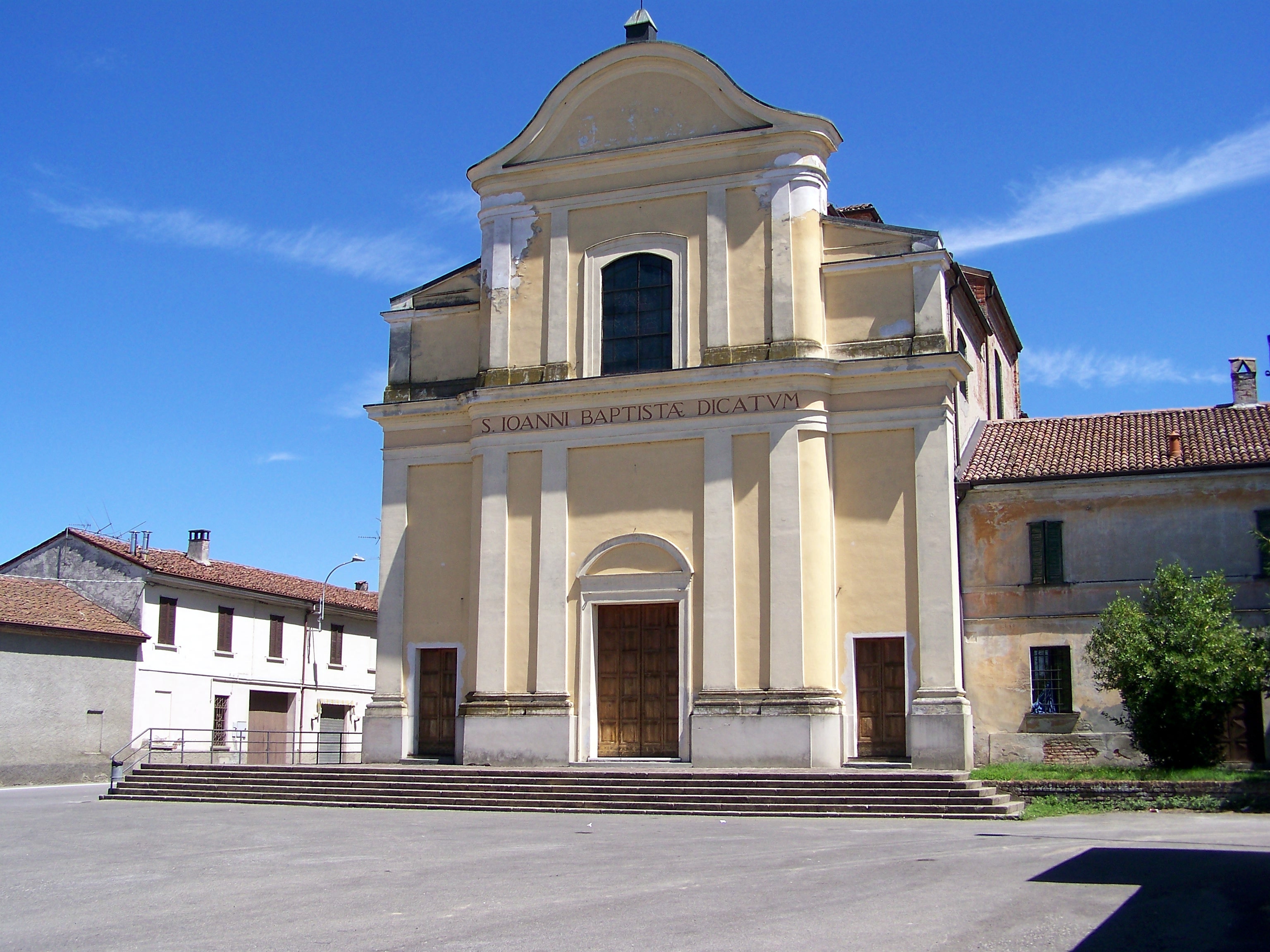|
San Giovanni Battista, Olmeneta
San Giovanni Battista is a Roman Catholic parish church located in the town of Olmeneta in the province of Cremona, region of Lombardy, Italy. History The church was rebuilt in the late 19th through 20th century, but retains the earlier Baroque architecture Baroque architecture is a highly decorative and theatrical style which appeared in Italy in the late 16th century and gradually spread across Europe. It was originally introduced by the Catholic Church, particularly by the Jesuits, as a means to ... influence – for example, the facade with rounded tympanum. entry on town. References 20th-century Roman Catholic church buildings in Italy[...More Info...] [...Related Items...] OR: [Wikipedia] [Google] [Baidu] |
Roman Catholic
The Catholic Church (), also known as the Roman Catholic Church, is the largest Christian church, with 1.27 to 1.41 billion baptized Catholics worldwide as of 2025. It is among the world's oldest and largest international institutions and has played a prominent role in the history and development of Western civilization. O'Collins, p. v (preface). The church consists of 24 ''sui iuris'' (autonomous) churches, including the Latin Church and 23 Eastern Catholic Churches, which comprise almost 3,500 dioceses and eparchies around the world, each overseen by one or more bishops. The pope, who is the bishop of Rome, is the chief pastor of the church. The core beliefs of Catholicism are found in the Nicene Creed. The Catholic Church teaches that it is the one, holy, catholic and apostolic church founded by Jesus Christ in his Great Commission, that its bishops are the successors of Christ's apostles, and that the pope is the successor of Saint Peter, upo ... [...More Info...] [...Related Items...] OR: [Wikipedia] [Google] [Baidu] |
Olmeneta
Olmeneta (Cremunés: ) is a ''comune'' (municipality) in the Province of Cremona in the Italy, Italian region Lombardy, located about southeast of Milan and about north of Cremona. Olmeneta borders the following municipalities: Casalbuttano ed Uniti, Castelverde, Corte de' Cortesi con Cignone, Pozzaglio ed Uniti, Robecco d'Oglio. San Giovanni Battista, Olmeneta, San Giovanni Battista is the Roman Catholic parish church of the town. Transportation Olmeneta is served by the Olmeneta railway station located at the junction of the lines Brescia–Cremona railway, Brescia–Cremona and Treviglio–Cremona railway, Treviglio–Cremona. References Cities and towns in Lombardy {{Cremona-geo-stub ... [...More Info...] [...Related Items...] OR: [Wikipedia] [Google] [Baidu] |
Olmeneta San Giovanni Battista 20100725
Olmeneta ( Cremunés: ) is a ''comune'' (municipality) in the Province of Cremona in the Italian region Lombardy, located about southeast of Milan and about north of Cremona. Olmeneta borders the following municipalities: Casalbuttano ed Uniti, Castelverde, Corte de' Cortesi con Cignone, Pozzaglio ed Uniti, Robecco d'Oglio. San Giovanni Battista is the Roman Catholic parish church of the town. Transportation Olmeneta is served by the Olmeneta railway station Olmeneta railway station is a railway station serving the town and comune of Olmeneta in the Regions of Italy, region of Lombardy, Northern Italy. The station is located at the junction of the Brescia–Cremona railway, Brescia–Cremona and Tre ... located at the junction of the lines Brescia–Cremona and Treviglio–Cremona. References Cities and towns in Lombardy {{Cremona-geo-stub ... [...More Info...] [...Related Items...] OR: [Wikipedia] [Google] [Baidu] |
Baroque Architecture
Baroque architecture is a highly decorative and theatrical style which appeared in Italy in the late 16th century and gradually spread across Europe. It was originally introduced by the Catholic Church, particularly by the Jesuits, as a means to combat the Reformation and the Protestantism, Protestant church with a new architecture that inspired surprise and awe. It reached its peak in the High Baroque (1625–1675), when it was used in churches and palaces in Italy, Spain, Portugal, France, Bavaria and Austria. In the Late Baroque period (1675–1750), it reached as far as Russia, the Ottoman Baroque architecture, Ottoman Empire and the Spanish colonization of the Americas, Spanish and Portuguese colonization of the Americas, Portuguese colonies in Latin America. In about 1730, an even more elaborately decorative variant called Rococo appeared and flourished in Central Europe. Baroque architects took the basic elements of Renaissance architecture, including domes and colonnades, ... [...More Info...] [...Related Items...] OR: [Wikipedia] [Google] [Baidu] |
Tympanum (architecture)
A tympanum ( tympana; from Greek and wiktionary:tympanum#Latin, Latin words meaning "drum") is the semi-circular or triangular decorative wall surface over an entrance, door or window, which is bounded by a lintel and an arch. It often contains pedimental sculpture or other imagery or ornaments. Many architecture, architectural styles include this element, although it is most commonly associated with Romanesque architecture, Romanesque and Gothic architecture, Gothic architecture. Alternatively, the tympanum may hold an inscription, or in modern times, a clock face. Tympanums in antiquity and the Early Middle Ages Tympanums are by definition inscriptions enclosed by a pediment, however the evolution of tympanums gives them more specific implications. Pediments first emerged early in Classical Greece around 700-480 BCE, with early examples such as the Parthenon remaining famous to this day. Pediments spread across the Hellenistic world with the rest of classical architecture. T ... [...More Info...] [...Related Items...] OR: [Wikipedia] [Google] [Baidu] |


